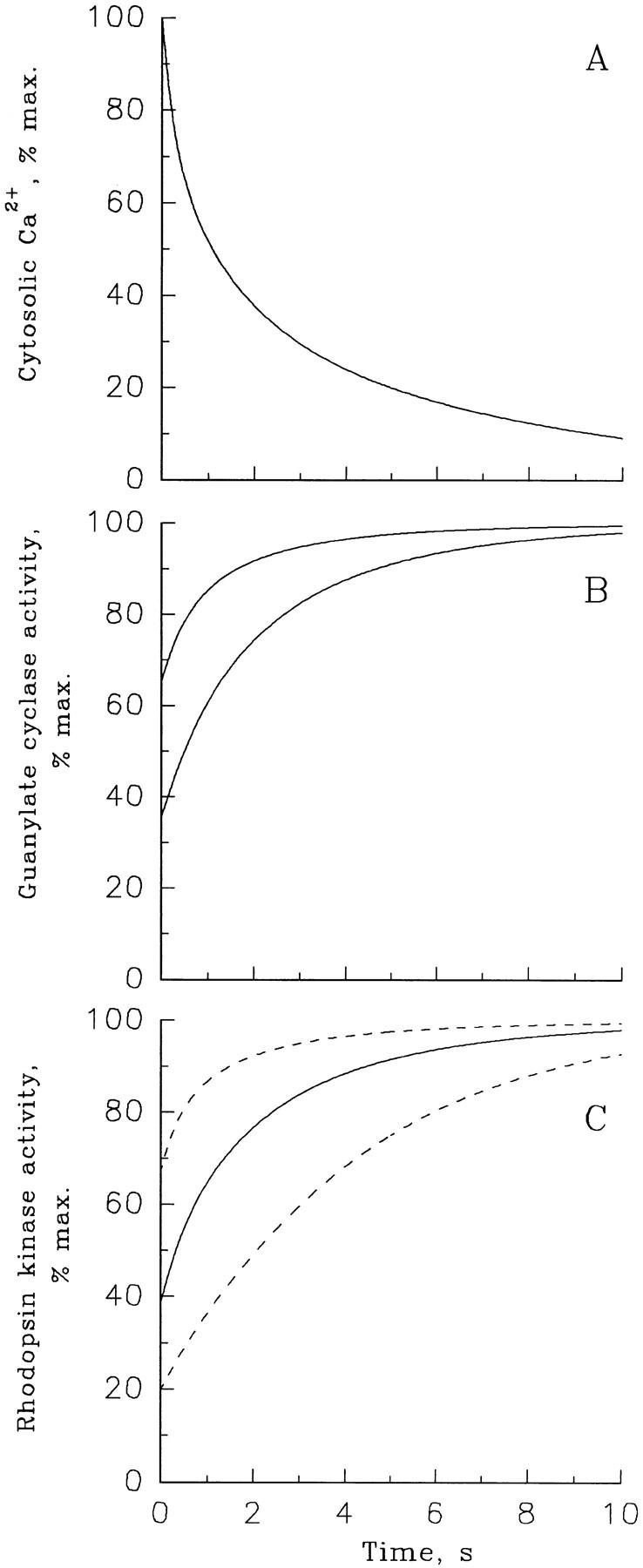Figure 8.

Predicted onset of Ca2+-dependent feedback reactions after bright illumination of frog photoreceptors. The time course of Ca2+ decline and the predicted increases in guanylate cyclase and rhodopsin kinase activities in rod photoreceptors after exposure to bright illumination is shown. (A) Change in free Ca2+ after saturating light. The curve was calculated from the sum of three exponential processes (McCarthy et al., 1996): Ca2+(t) = 25e−t/ 0.25 + 35e−t/ 1.35 + 40e−t/ 6.75. (B) The onset of the cyclase activity. Cyclase activity was calculated by the numerical solution of this equation and Eq. 1 in the text using the computer program Mathcad (version 6.0; MathSoft, Inc., Cambridge, MA). A 0.2-s delay was imposed between the Ca2+ decline and the change in the cyclase rate. The upper curve was calculated assuming a dark Ca2+ level of 200 nM and the lower curve with a dark Ca2+ of 400 nM. (C) Onset of rhodopsin kinase activity. In this case, the delay of 0.11 s found in Fig. 4 was imposed. The Ca2+ dependence of the kinase activity was taken from calculations in Klenchin et al. (1995). The solid line assumes a Ca2+ K 1/2 for kinase regulation of 270 nM. The dashed lines above and below the solid line assume Ca2+ K 1/2 values of 540 and 135 nM, respectively.
